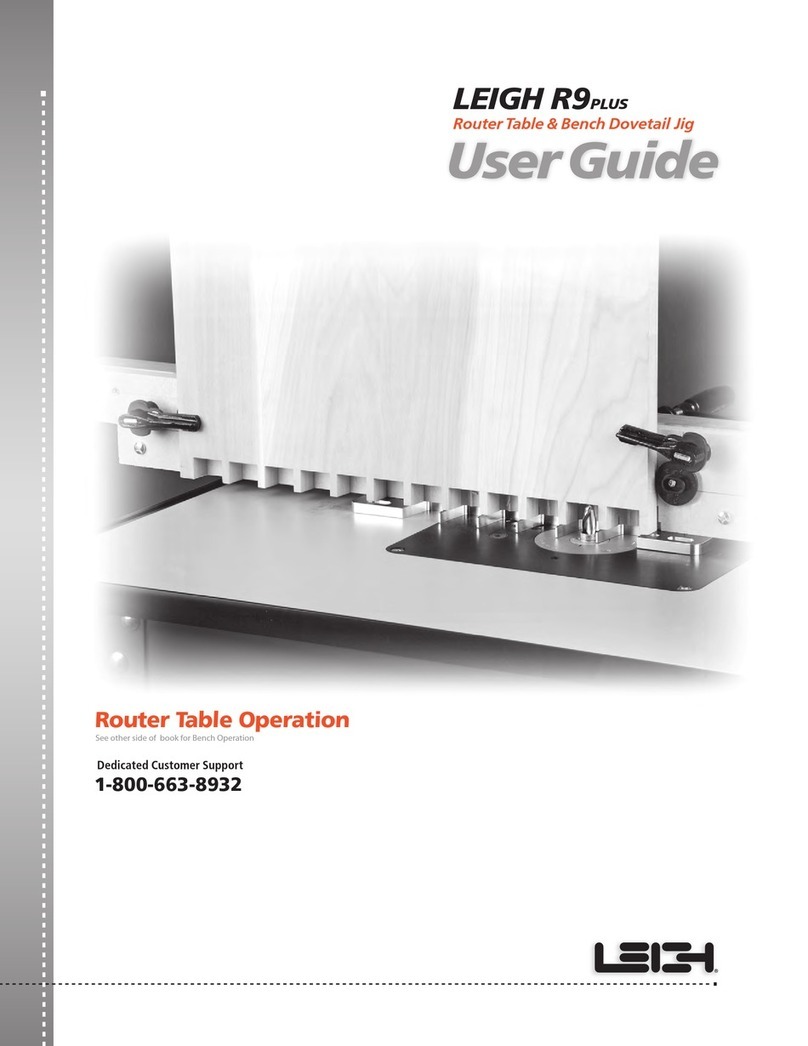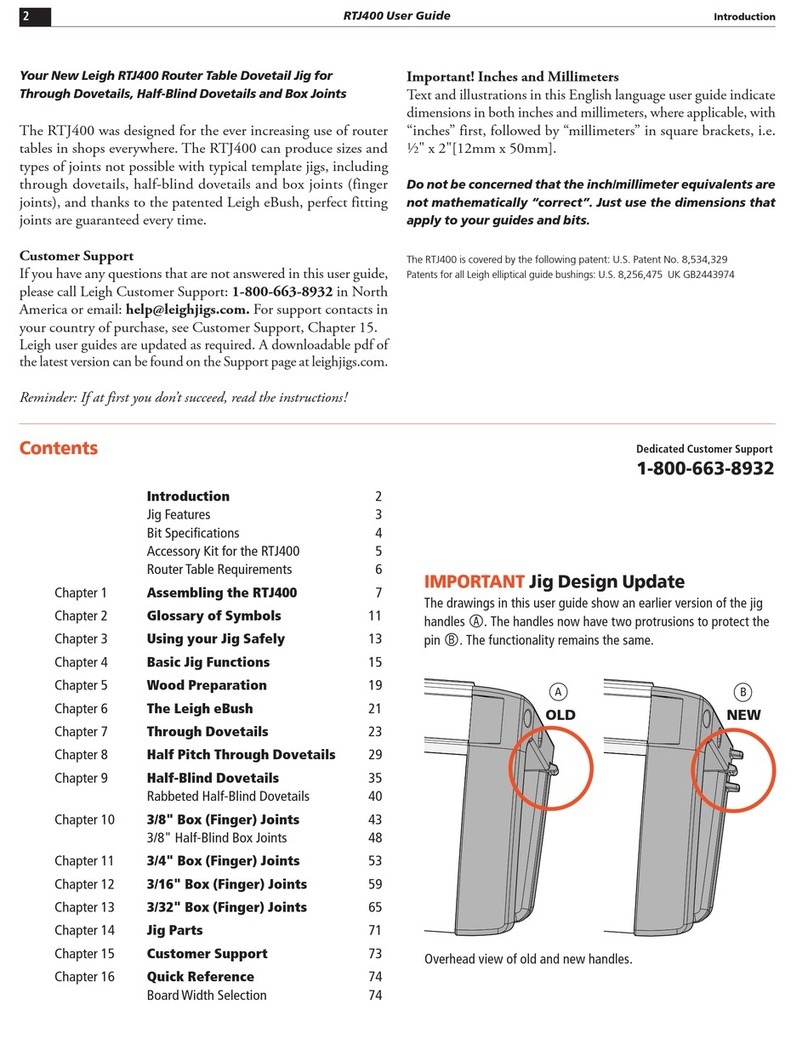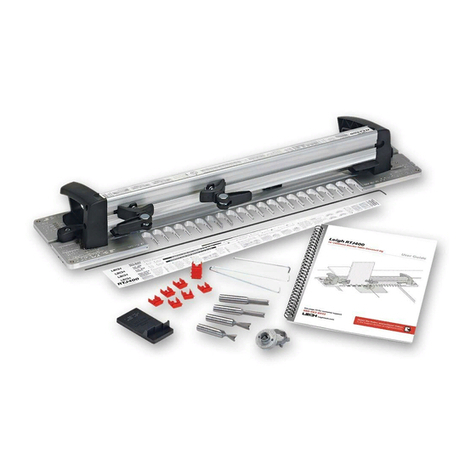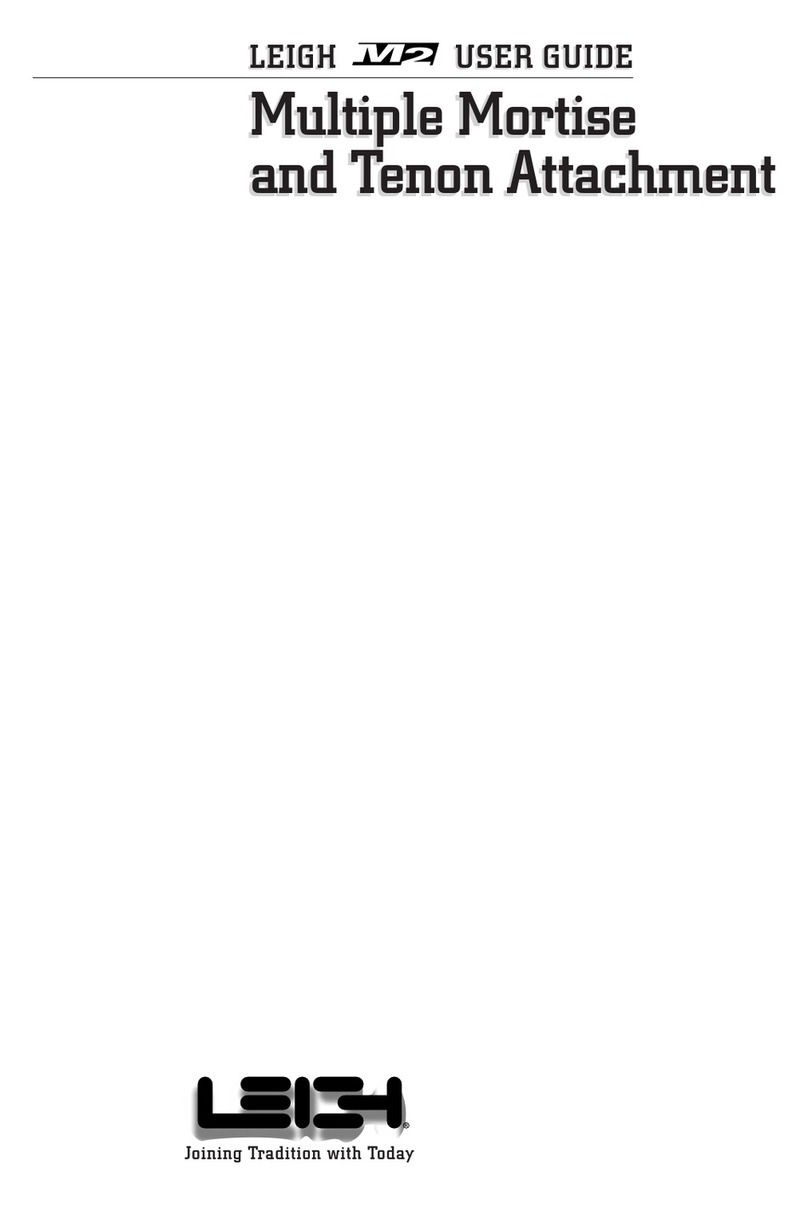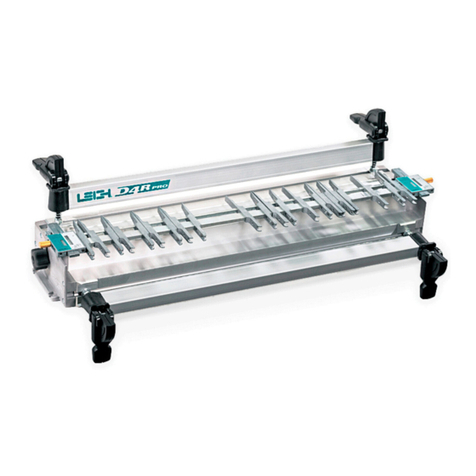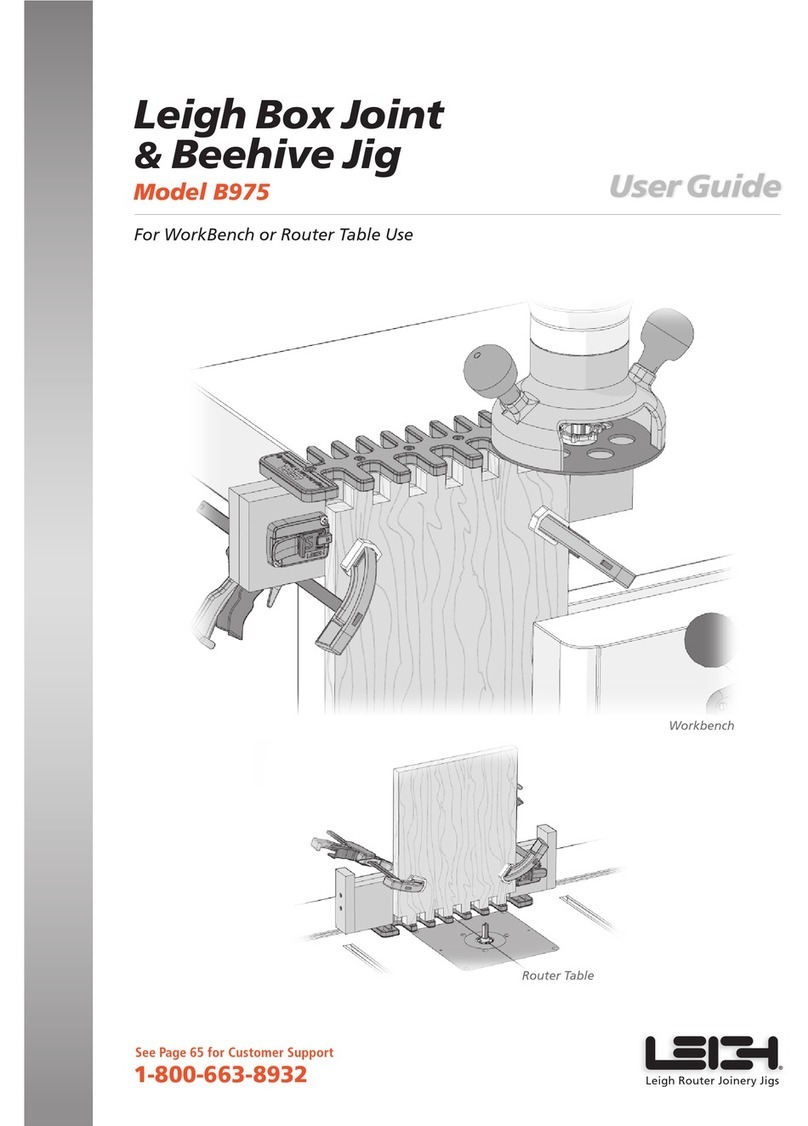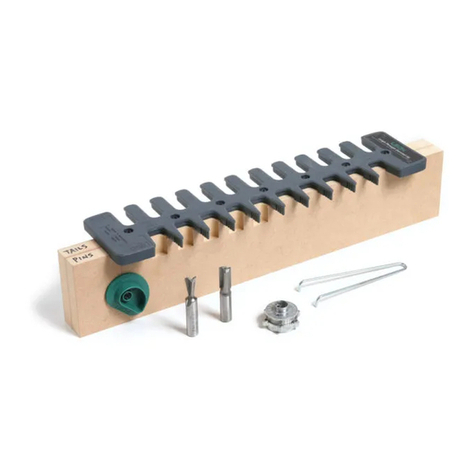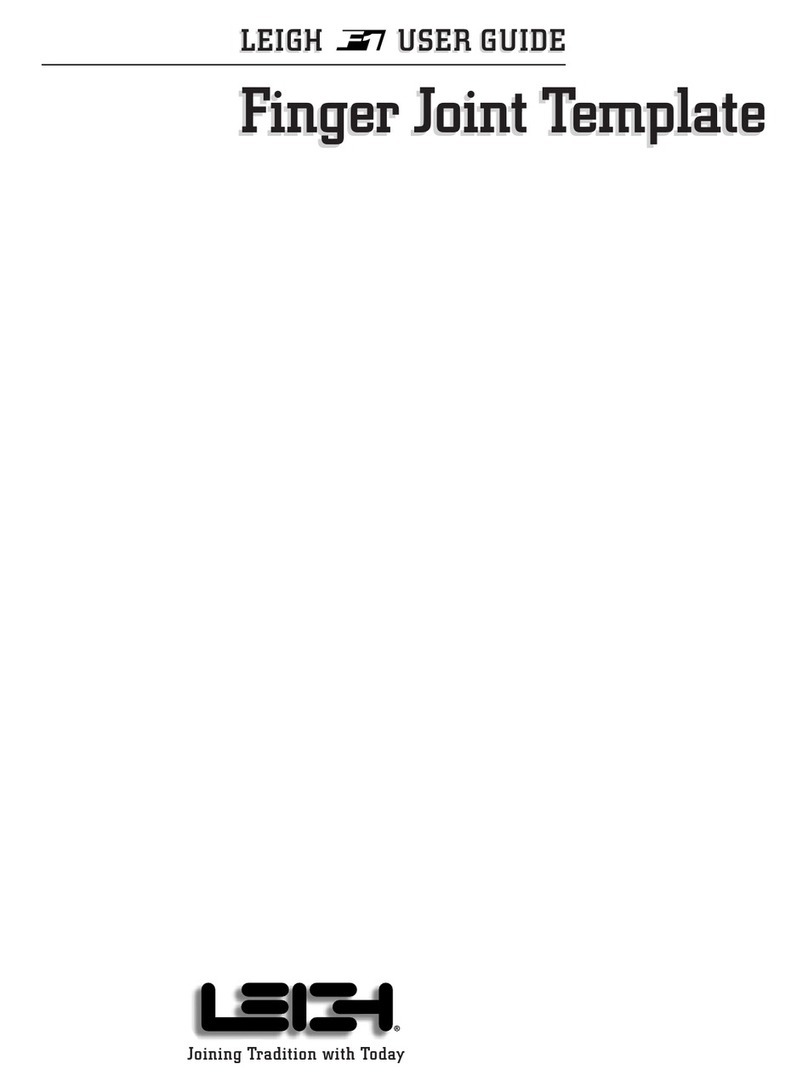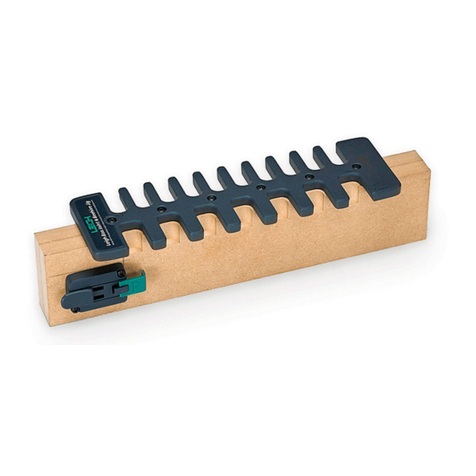
iii
Frame Mortise & Tenon Jig User Guide
Contents
CHAPTER 1 Mounting the FMT Pro................................................................. 1
CHAPTER 2 Mounting the Router................................................................... 3
Fence Rod Mounting.................................................................... 3
Screw Mounting ........................................................................... 8
CHAPTER 3 The FMT Pro Jig........................................................................... 11
The Clamp Plate and Clamping ................................................11
The Table......................................................................................14
Jig Operation Concept...............................................................16
Safety and Router Operation ................................................... 17
Wood Preparation......................................................................19
CHAPTER 4 Mortise & Tenon Procedures.....................................................21
Single Mortise & Tenon, Test..................................................... 21
Production Procedures ..............................................................27
Small Joints..................................................................................28
CHAPTER 5 Multiple Joints ............................................................................31
Double In Line Joints.................................................................. 31
Twin Joints...................................................................................33
Quadruple Joints ........................................................................35
Triple Joints ................................................................................. 37
CHAPTER 6 Workpiece and Joint Options...................................................41
Different Workpiece Thicknesses.............................................41
Longer and Shorter Joints ......................................................... 42
Thicker and Wider Boards ......................................................... 44
CHAPTER 7 Special Joints...............................................................................47
Angled Joints ..............................................................................47
Through Tenons..........................................................................48
Bridle Joints.................................................................................50
Asymmetric Tenons ....................................................................51
Haunched Joints .........................................................................51
Doweling .....................................................................................54
Appendix I Joint Specifications, Guide and Bit Selection.........................55
Joint Specifications.....................................................................55
Guide and Bit Selection .............................................................57
Appendix II Jig Adjustments..........................................................................61
Appendix III Parts List......................................................................................63
Appendix IV Customer Support ......................................................................69
